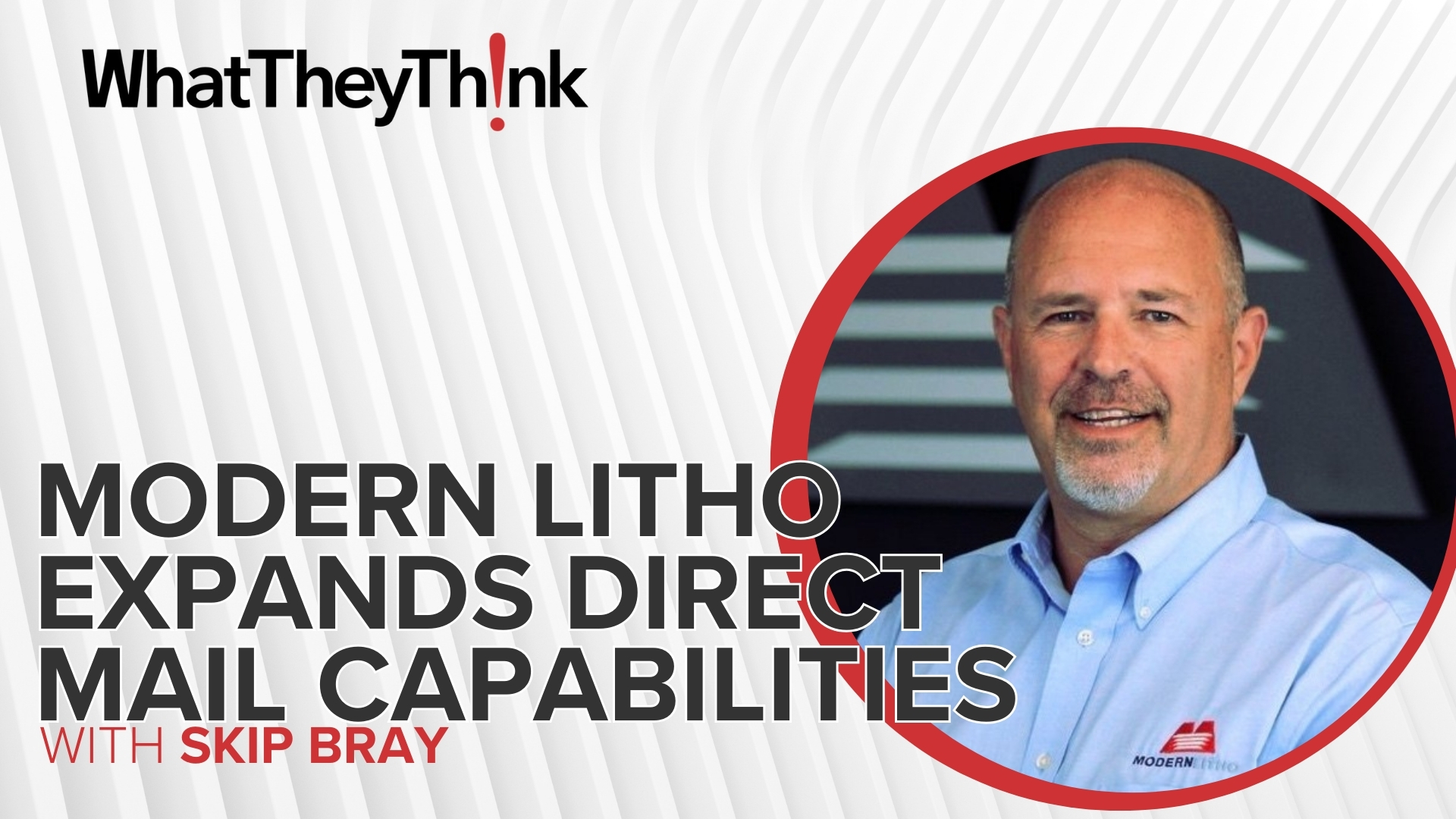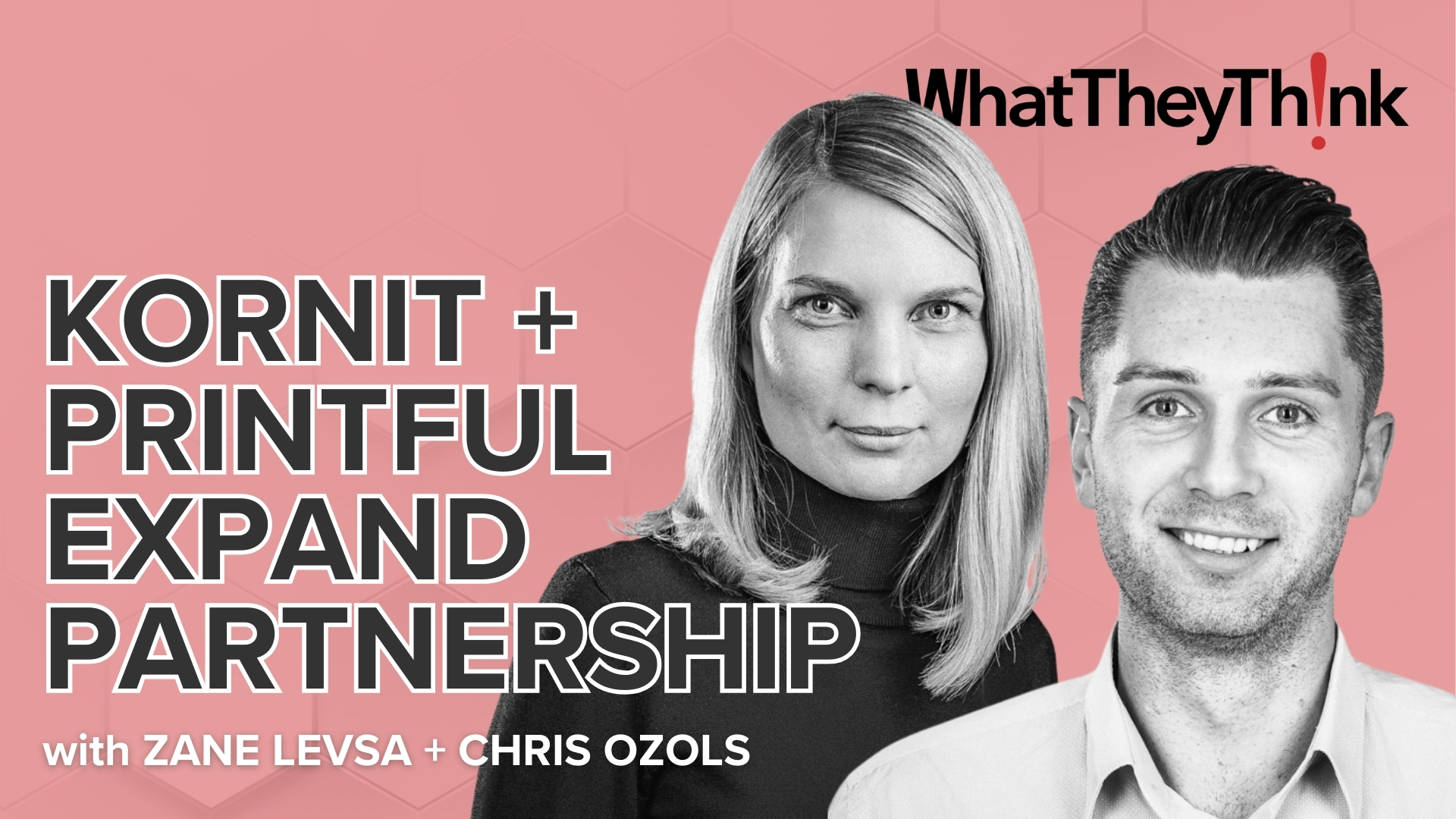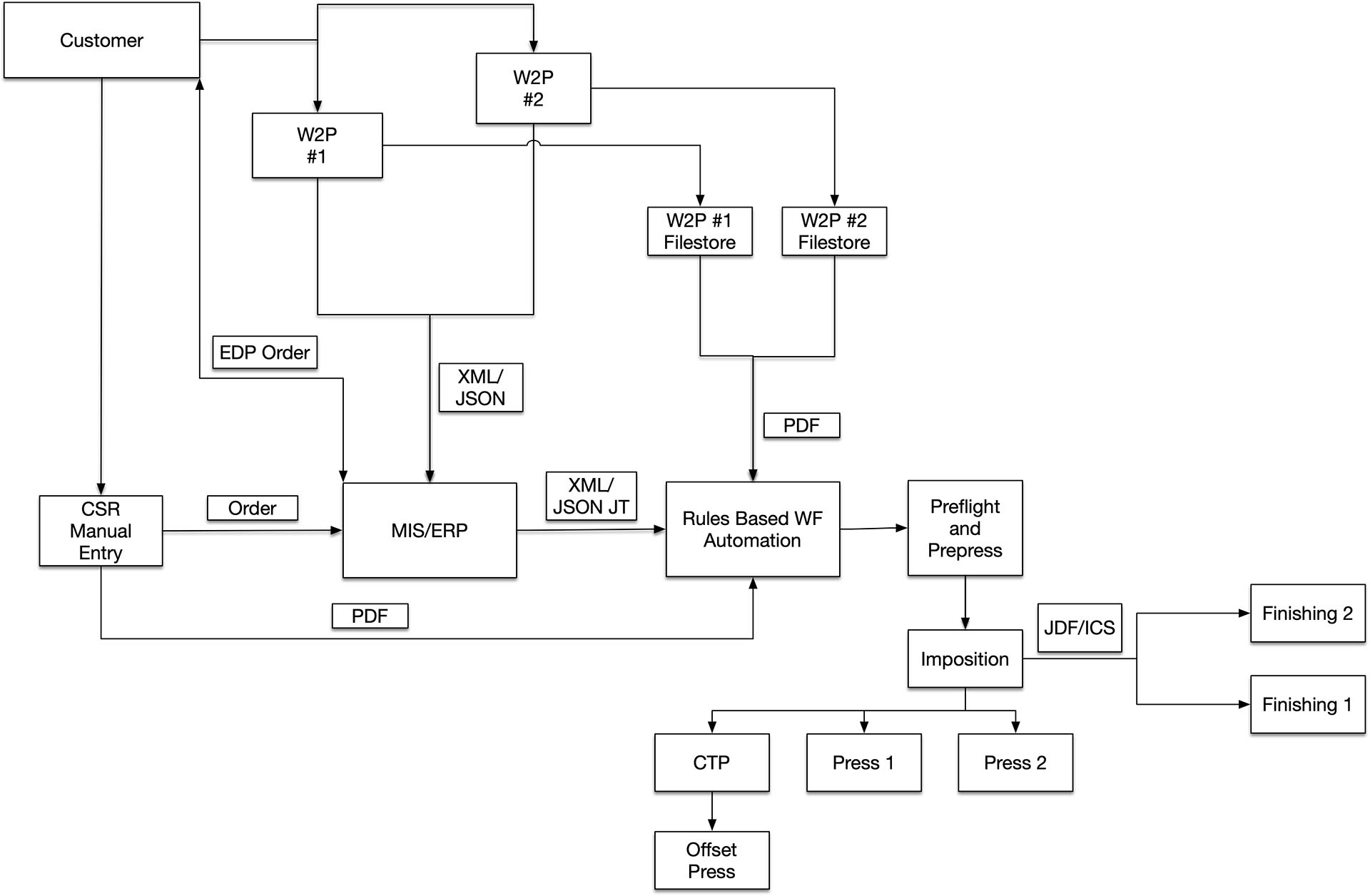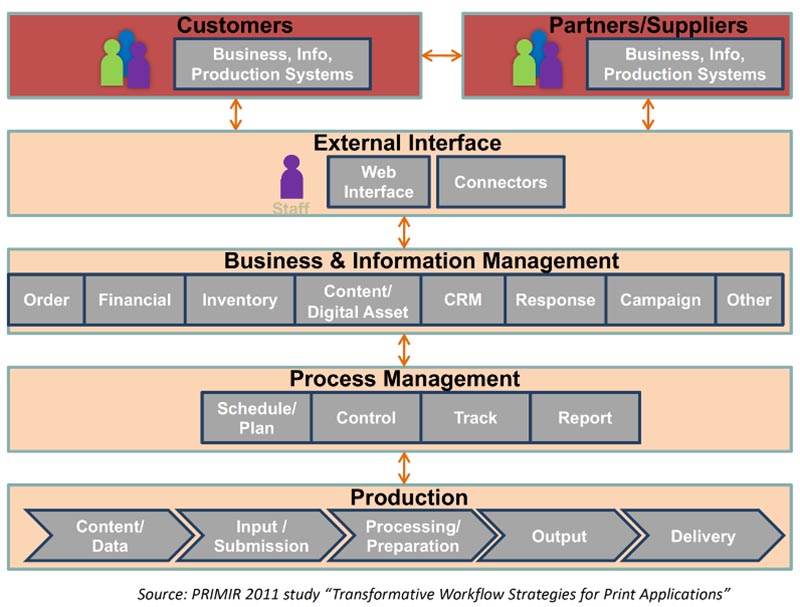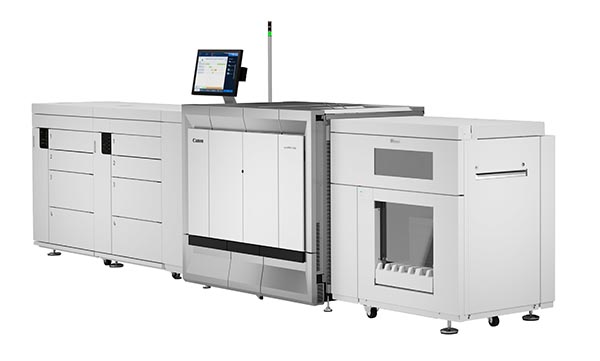(Watch David Zwang's video interview with Global Graphics' Eric Worrall about the SmartDFE here.)
Background
The benefits of a connected supply chain are significant, not just in the reduction of production costs, but also in the return it can bring to the entire value chain. In the first article in this series, we took a look at “the state of readiness of the print industry’ to participate in this new way of doing business. We then started to break down the various processes in your plant into three main components: hardware, software, and labor (as well as combinations of all). Each of the subsequent articles looks at what you need to do to prepare to capture process, control, and communicate the data bidirectionally in hardware systems in order for a successful 4.0 implementation.

Connected Modularity
Many companies have been creating solutions to enhance your production plant. However, as we look at the disparate nature of our internal and external processes, and the need for communicating business and production data, few have directly addressed the needs of a Smart Factory for broader value chain connectivity—until recently.
One of those companies who did is Global Graphics, who announced their SmartDFE which is specifically designed to be integrated into a supply chain with connected modularity utilizing a OPC UA compliant interface. This interface becomes the connection point to the SmartDFE supporting a Smart Factory, that takes advantage of the extensive network of interconnected systems. The Smart Factory has interoperable systems and could even provide multi-scale dynamic modelling and simulations, intelligent automation, strong cyber security, and networked sensors.

There are two main components to the SmartDFE solution: the OPC UA Client and the OPC UA Server. The client can bidirectionally communicate with disparate devices within the production line through PLCs and display device-specific information, like ink levels and inkjet head temperatures, etc., and it also makes the information available to the server. The server allows the printer to appear as a single device to the Smart Factory OPC clients and multiple SmartDFE’s to be controlled from one point in the factory (using industry standard HMI and SCADA systems). The data from the SmartDFE server can be published to the wider smart factory and stored in the Cloud for trend-based analysis.
What Really Makes It a “Smart” Factory?
Connecting and automating devices in production is really not new. However, using machine learning and artificial intelligence (AI) to interpret the SmartDFE data and convert it into actionable information to make business and production decisions is.
Artemis, a new solution from Global Graphics is a cloud-based data collection hub which uses AI to power each of the components of the SmartDFE.
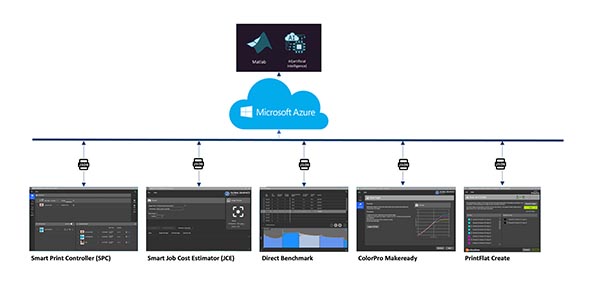
The data is collected anonymously and can be used to model different systems and track them over time. The data is put through an advanced artificial intelligence system to acquire and process knowledge which can be passed on to manufacturers or downloaded back to the SmartDFE to make the system more effective. Once the data analysis has been done in the Cloud, the intelligence can be viewed and run locally at the SmartDFE or using other applications.
Different levels of intelligence can be provided by Artemis. Examples could be predictive maintenance, which has proven to be the most cost-effective way to keep printers running around the clock. Predictive maintenance tracks key data and uses models trained on trends to predict parts that are actually entering a failure state before the failure happens.
Another example of actionable intelligence could be identifying the right PC hardware for RIPing jobs and driving the head driver electronics directly at their printers’ full rated speed to ensure you are not over- or under-specifying a system. Using centrally stored benchmarks, you can start to predict what PC specifications will be required for a specific job and line speed. In a similar manner, you can analyze the models for the Smart Print Controller (SPC) to predict the line speed achievable with any specific job. Using this information, a print operator can choose to slow a printer down, streamline the job before submitting, or reject the job.
By analyzing job performance histories along with maintenance costs, human costs, and consumables, using the Smart Job Cost Estimator (JCE), you can take a PDF and generate a cost based on the information that comes back from Artemis and SPC to provide richer cost prediction models.
Deep Learning
As the historical data in the cloud continues to populate and more systems provide additional information, other trends and patterns can be identified and modeled. The Microsoft Azure cloud platform used by SmartDFE supports an interface to MathWorks® MATLAB. MATLAB is used by engineers and scientists to run powerful experiments and visualize the data using big data functions. Utilizing this technology, printer manufacturers can produce more efficient systems and print service providers can optimize their production costs and estimates. Ultimately working with a connected modularity, the entire value chain can benefit.
Optimizing Today and preparing for tomorrow
Global Graphics has been providing solutions to a who’s who of printer manufacturers and print service providers for decades. The SmartDFE will provide them and their customers a forward-thinking way to support the rapidly evolving business marketplace and prepare for Industry 4.0.
What’s Next?
In the next article we will look at more software systems, some of which are included with the hardware like a DFE, but some just standalone for process management. Each of these would be another component in the plant from which we identify, capture, translate and communicate the process data across the plant and perhaps the whole supply chain with the goal of achieving and participating in Industry 4.0.
More to Come…
I would like to address your interests and concerns in future articles as it relates to the manufacturing of Print, Packaging, and Labels, and how, if at all, it drives future workflows including “Industry 4.0.” If you have any interesting examples of hybrid and bespoke manufacturing, I am very anxious to hear about them as well. Please feel free to contact me at david@zwang.com with any questions, suggestions, or examples of interesting applications.

